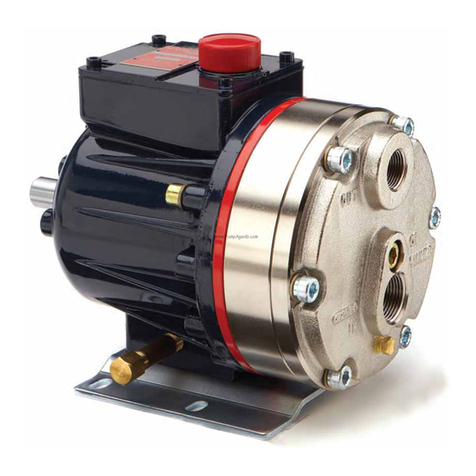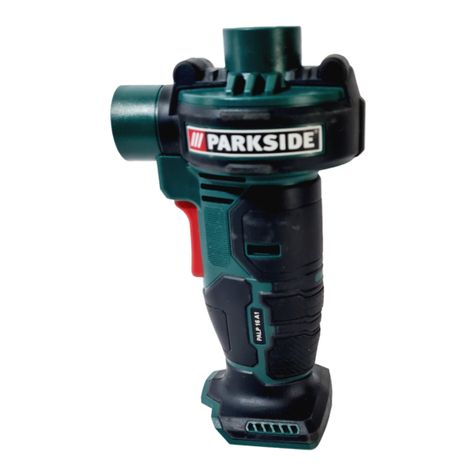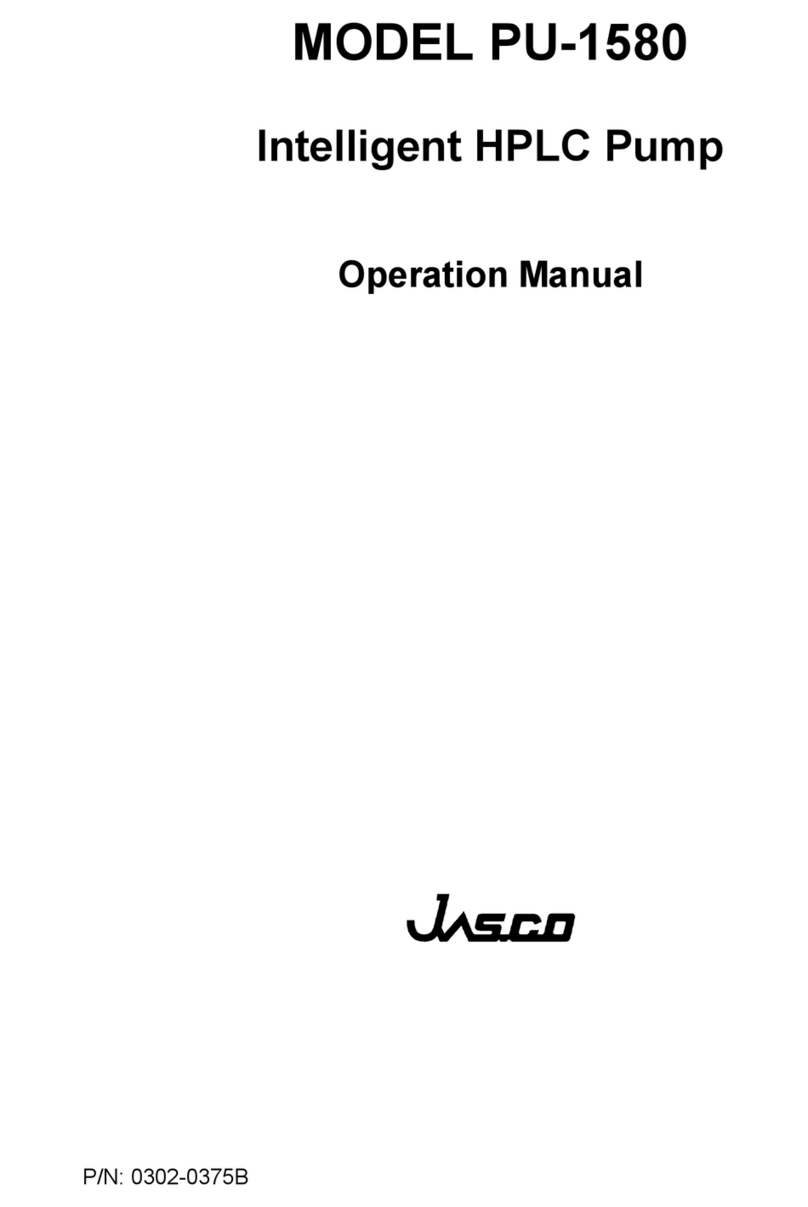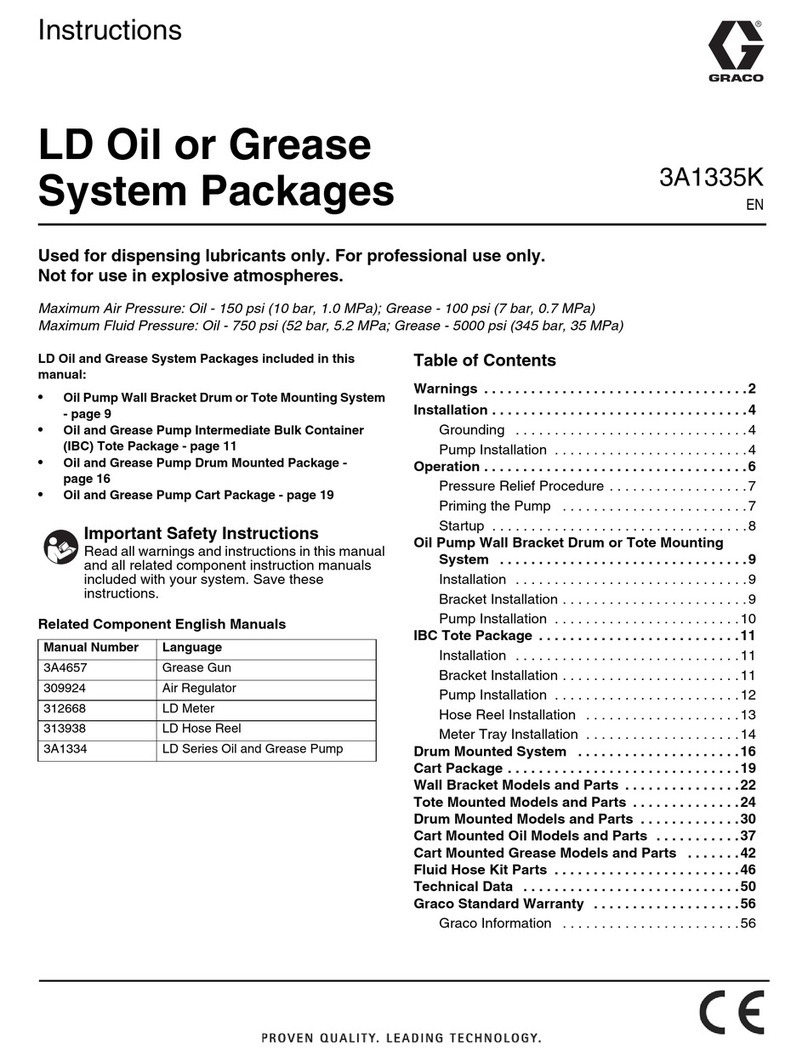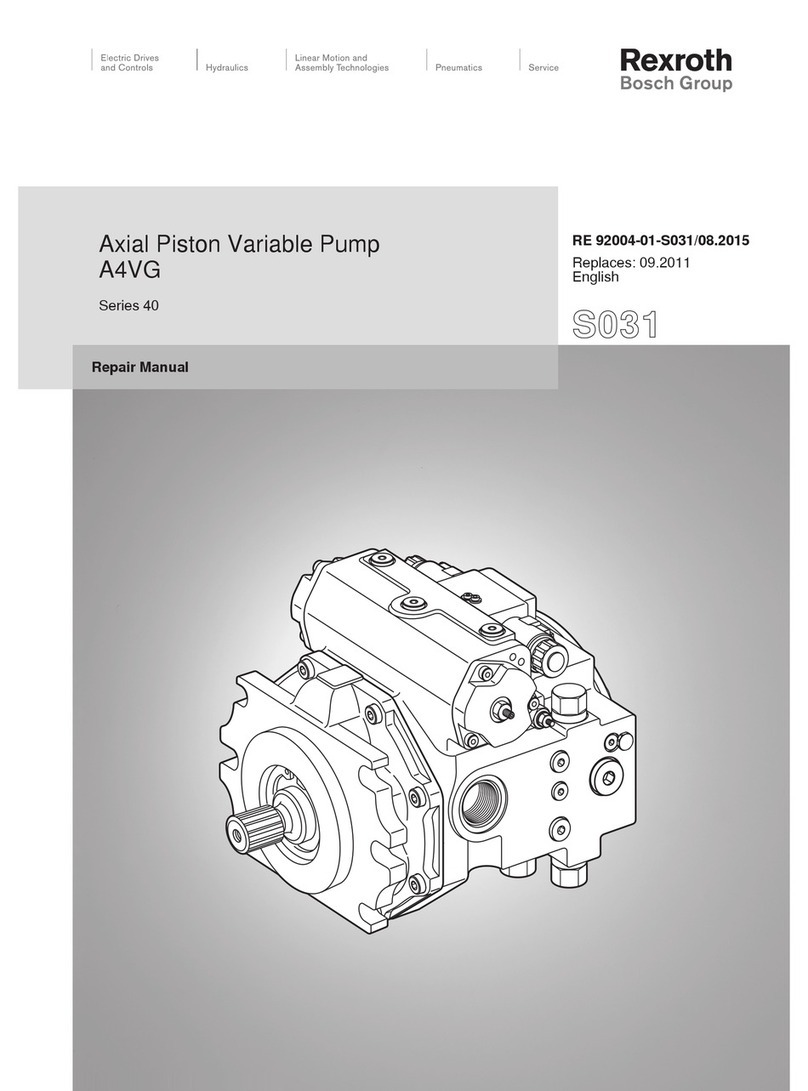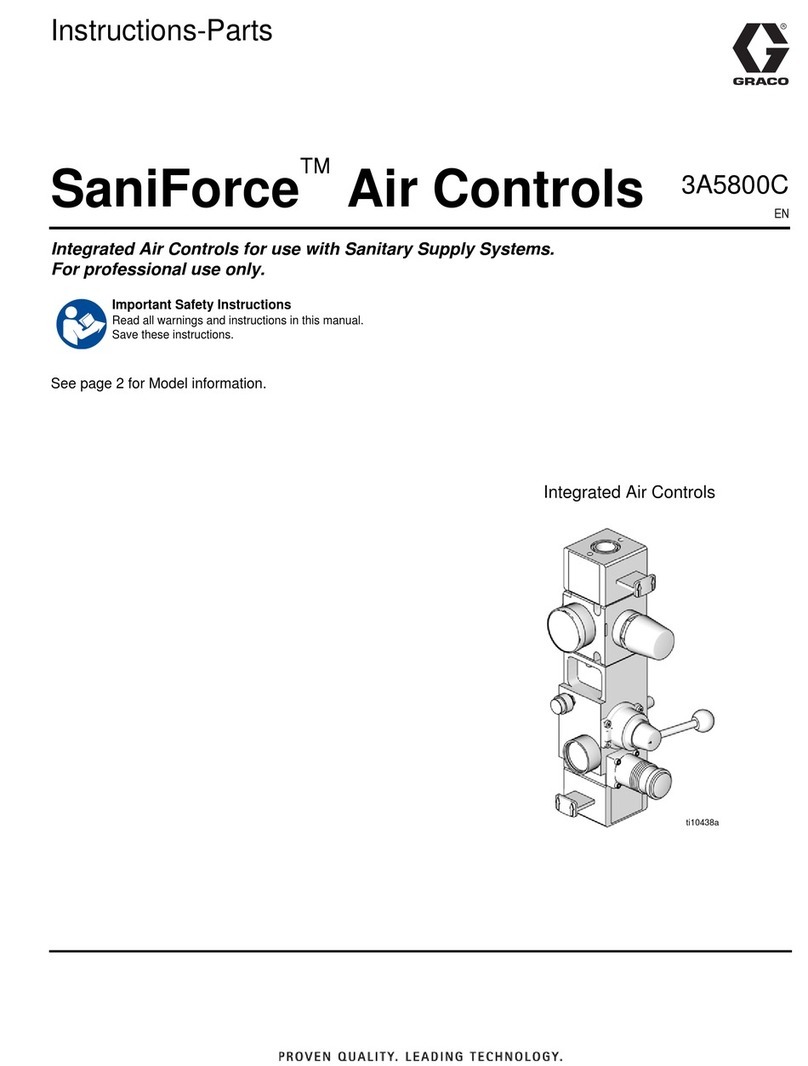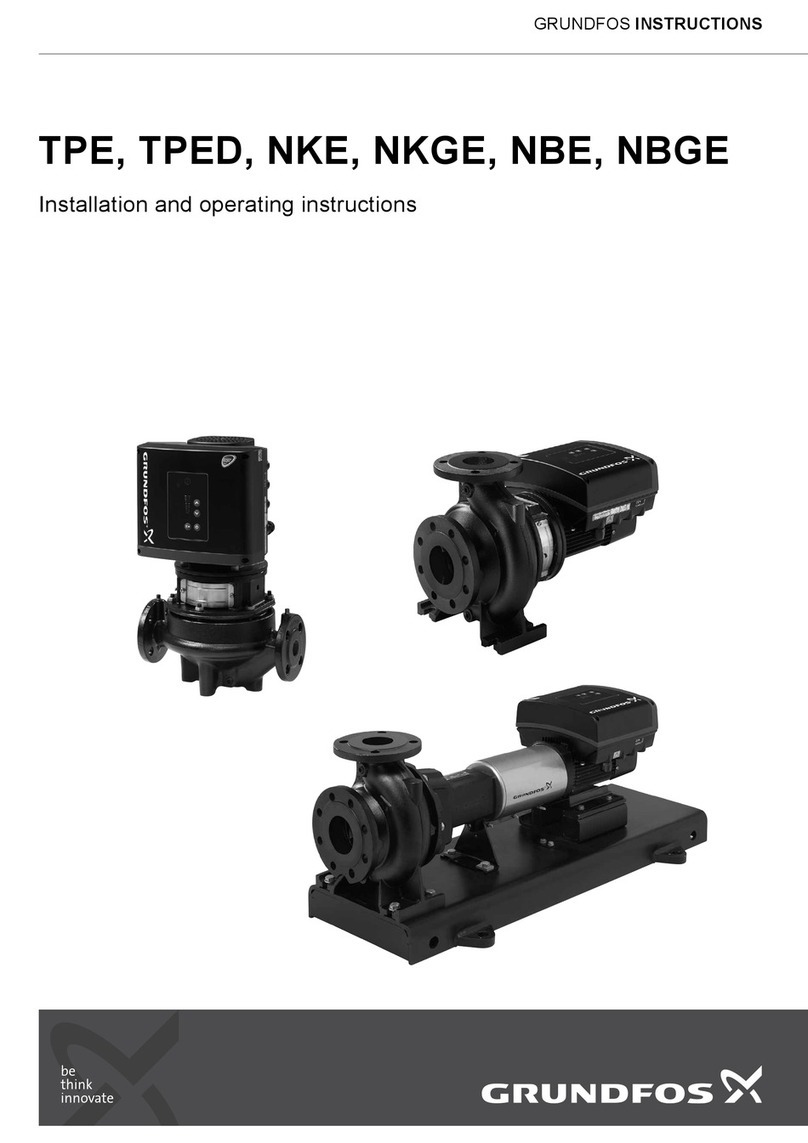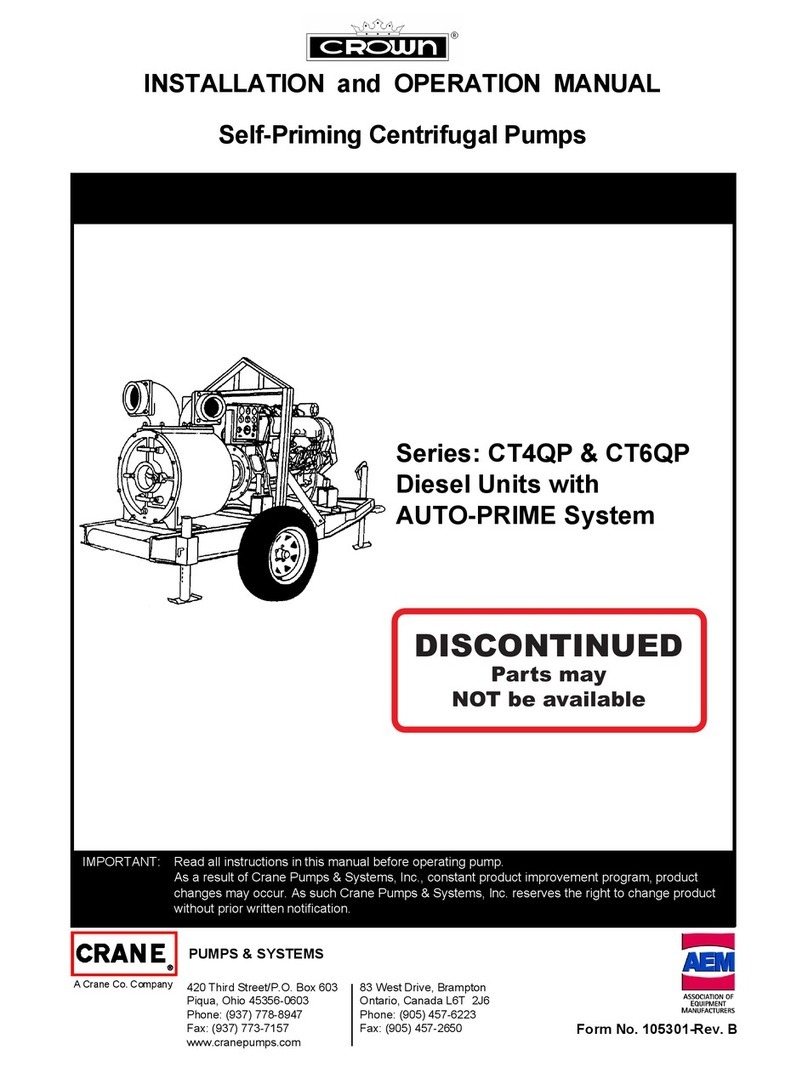GD AQUALINE 1200 User manual

Installation
Instructions
AQUALINE
1200
T-EA-5100-1-GB-07-08


Table of contents
T-EA-5100-1-GB-07-08 3
Table of contents
Table of contents
1. Technical data . . . . . . . . . . . . . . . . . . . . . 7
1.1 Machine data . . . . . . . . . . . . . . . . . . . . . . . . . 7
1.2 Dimensions . . . . . . . . . . . . . . . . . . . . . . . . . . 8
1.3 Location of lubricating points . . . . . . . . . . . . . 9
1.4 Operating fluid . . . . . . . . . . . . . . . . . . . . . . . . 9
1.5 Drive . . . . . . . . . . . . . . . . . . . . . . . . . . . . . . . 9
2. Safety instructions and hazard
alerts . . . . . . . . . . . . . . . . . . . . . . . . . . . . 11
2.1 Use for intended purpose. . . . . . . . . . . . . . . 11
2.2 Acceptance and monitoring . . . . . . . . . . . . . 11
2.3 Hazard alerts and symbols . . . . . . . . . . . . . 11
2.4 Safe working . . . . . . . . . . . . . . . . . . . . . . . . 11
3. Transport . . . . . . . . . . . . . . . . . . . . . . . . 13
3.1 Transport . . . . . . . . . . . . . . . . . . . . . . . . . . . 13
3.2 Storage . . . . . . . . . . . . . . . . . . . . . . . . . . . . 13
3.3 Scope of delivery . . . . . . . . . . . . . . . . . . . . . 13
4. Installation . . . . . . . . . . . . . . . . . . . . . . . 15
4.1 System setup with cooler in main flow . . . . . 15
4.2 System setup with cooler in side flow . . . . . 16
4.3 Point of installation and fastening . . . . . . . . 18
4.4 Connections and piping . . . . . . . . . . . . . . . . 18
4.5 Protection against intake of dirt and
residue . . . . . . . . . . . . . . . . . . . . . . . . . . . . . 19
4.5.1 Suction line . . . . . . . . . . . . . . . . . . . . . . . . . 19
4.5.2 Vacuum filter . . . . . . . . . . . . . . . . . . . . . . . . 19
4.5.3 Safety dome. . . . . . . . . . . . . . . . . . . . . . . . . 19
4.5.4 Safety bowl . . . . . . . . . . . . . . . . . . . . . . . . . 19
4.6 Safety and monitoring instruments . . . . . . . 19
4.6.1 Vacuum gauge. . . . . . . . . . . . . . . . . . . . . . . 20
4.6.2 Vacuum filter . . . . . . . . . . . . . . . . . . . . . . . . 20
4.6.3 Non-return valve . . . . . . . . . . . . . . . . . . . . . 20
4.6.4 Thermometer . . . . . . . . . . . . . . . . . . . . . . . . 20
4.6.5 Safety valve . . . . . . . . . . . . . . . . . . . . . . . . . 20
4.6.6 Pressure gauge . . . . . . . . . . . . . . . . . . . . . . 20
4.6.7 Hand guard . . . . . . . . . . . . . . . . . . . . . . . . . 20
4.6.8 Bellows. . . . . . . . . . . . . . . . . . . . . . . . . . . . . 21
4.6.9 Speed monitor . . . . . . . . . . . . . . . . . . . . . . . 21
4.7 Operating fluid . . . . . . . . . . . . . . . . . . . . . . . 21
4.7.1 Operating water back-cooling and storage
tank . . . . . . . . . . . . . . . . . . . . . . . . . . . . . . . 21
4.7.2 Cell Ventilation . . . . . . . . . . . . . . . . . . . . . . . 21
4.8 Drive. . . . . . . . . . . . . . . . . . . . . . . . . . . . . . . 22
4.8.1 Drive by hydromotor. . . . . . . . . . . . . . . . . . . 22
4.8.2 Drive by flexible clutch . . . . . . . . . . . . . . . . . 22
4.8.3 Drive by Prop. shaft . . . . . . . . . . . . . . . . . . . 22
4.8.4 Drive by Vee belt . . . . . . . . . . . . . . . . . . . . . 23
5. Start-up / Operation / Maintenance /
Spare parts . . . . . . . . . . . . . . . . . . . . . . . 25
6. Index . . . . . . . . . . . . . . . . . . . . . . . . . . . . 27
7.

Table of contents
4T-EA-5100-1-GB-07-08

Preface
T-EA-5100-1-GB-07-08 5
Preface
Dear customer,
your new Liquid Ring Pump is the outcome of intensive
development based on decades of experience as a
supplier of vacuum pumps and compressors to the
suction vehicle market. Advanced manufacturing
methods in combination with highest quality standards
and extensive testing ensure reliability, a high degree
of availability and long life of your machine.
You will appreciate that this machine requires expert
attention, especially in severe conditions. Commis-
sioning, operation and maintenance therefore require
trained and authorized personnel.
These Operating Instructions contain all required infor-
mation and have been written for those in charge of the
unit. The machine will give smooth service for a long
time provided these Instructions are followed. The Op-
erating Instructions are a component part of the prod-
uct and must be kept available for the operating
personnel. You will appreciate that we cannot be held
responsible for any damage caused due to non-com-
pliance with these Instructions.
Please note that repairs should only be undertaken by
authorized repair centres using original parts. Other-
wise our guarantee will be void.
We wish you success with your Liquid ring pump from
Gardner Denver. If you have any questions for which
you do not find an answer in this booklet, please call
us.
Sincerely yours,
Gardner Denver Drum

Mode of operation, Design versions
6T-EA-5100-1-GB-07-08
Mode of operation, Design versions
Mode of operation
Liquid compressor vacuum pumps, like rotary com-
pressor vacuum pumps, work on the displacement
principle, providing uniform, low-pulsation flow.
Single-shaft liquid ring machines have a housing with
cylindrical bore and an eccentrically mounted bucket
wheel. The housing is partly filled with liquid, which the
rotation of the bucket wheel forms into a rotating liquid
ring in contact with the housing. Together with the hub
of the eccentrically mounted bucket wheel, it forms a
sickle-shape working space divided by the vanes of
the bucket wheel.
The rotation of the rotor causes the cell volume to be-
come large at the intake side. This causes a vacuum
which sucks air into the cell, which is open towards the
air intake. As the rotation continues, the cell closes and
the cell volume becomes smaller. As a result of this,
the enclosed air is compressed and pushed out of the
pressure outlet.
The cells are charged and drained through openings in
the housing cover located on the bucket wheel faces.
This functional principle causes the machine to work
nearly at isothermal compression due to internal cool-
ing.
The first digit of the references to illustrations
in these Operating Instructions refers to the
chapter in which you find the illustration. The
illustrations within each chapter are numbered
consecutively. The last number of an illustra-
tion reference denotes the position number of
the item in the references illustration.
For example, the reference (7.2 / 3):
second illustration in chapter 7, item number 3.
This symbol precedes information that refers to
units used in a potentially explosive atmos-
phere.
Design versions
The design versions differ in their sense of rotation.
Type code:
AQUALINE 1200 R
Liquid ring pump,
operating medium:
water1)
1) Water is the working liquid commonly used by suc-
tion vehicles.
Machine size R = CW rotation
L = CCW rotation

Technical data
T-EA-5100-1-GB-07-08 7
Technical data
1. Technical data
1.1 Machine data
Liquid ring pumps of the Aqualine series use water as
operating fluid.
Conveyed medium
Air of maximum intake temperature of 60 °C.
Operating fluid
Water or water-glycol mixture
Maximum outlet temperature
The temperature at the outlet of the liquid compressor
vacuum pump should be restricted to maximum 65 °C.
The machine number and other important machine
data are given on the machine’s nameplate.
Technical data
Liquid ring pump Aqualine 1200
Rated operating vacuum (absolute) mbar 400
Maximum gauge pressure in compressor
operation 1) barg 1.5
At 400 mbar (absolute) intake pressure
volume flow rate
final gauge pressure
power consumption on shaft
m3/h
barg
kW
at 1000 min-1
650
0.0
18
at 1500 min-1
1,050
0.0
38
at 1800 min-1
1,220
0.0
57
At 1,000 mbar (absolute) intake pressure
volume flow rate
final gauge pressure
power consumption on shaft
m3/h
barg
kW
at 1000 min-1
600
0.5
19
at 1500 min-1
980
0.5
38.5
at 1800 min-1
1,150
0.5
58
Possible maximum vacuum approx. (absolute) mbar 130
Permissible speed range 1/min 1,000...1,800
Mass moment of inertia, incl. liquid ring kgm20.75
Sound pressure at 7 m distance at 400 mbar
(absolute) dB(A) 66
Weight of the basic machine kg 120
All data relate to water at 20 °C inlet temperature as the operating fluid and intake temperature of
20 °C.
Operating fluids other than water or water-glycol mixture require prior consultation with the manufac-
turer.
The data and illustrations reflect the current state. The right of modifications is reserved.
1) Secure by providing a safety valve

Technical data
8T-EA-5100-1-GB-07-08
1.2 Dimensions
Fig. 1.1 Dimensions of Aqualine 1200
14
[0,551]
48 k6
(
+0,002
0,018
+
)
1,890 k6
(
+0
0,001
+
)
[]
Ø
80
[3,150]
51,5
[2,028]
370
[14,567]
170
[6,693]
270
[10,630]
274
[10,787]
M16 x 27
M16 x [1,063]
64
[2,520]
123
[4,843]
32
[1,260]
103
[4,055]
200
[7,874]
Ø90
[3,543]
Ø90
[3,543]
Anschluß Zellbelüftung G 1 1/2"
[Connection for an additional ventilation G 1 1/2"]
Betriebswasser Anschluß G 1 1/2"
[Connection for the liquidring fluid G 1 1/2"]
Betriebswasser Entleerung G 3/4"
[Drain for the liquidring fluid G 3/4"]
536,5
[21,122]
475
[18,701]
644
[25,354]
561
[22,102]
Betriebswasser Entleerung G 3/4"
[Drain for the liquidring fluid G 3/4"]
Drehrichtungsangabe
[direction of rotation]
A1
A2
B2
B1
Air connection:
intake side discharge side
Aqualine ccw rotation
serial No. 910 700 00
connection A1/A2 connection B1/B2
Aqualine cw rotation
serial No. 910 701 00
connection B1/B2 connection A1/A2

Technical data
T-EA-5100-1-GB-07-08 9
1.3 Location of lubricating points
1.4 Operating fluid
The operating fluid is water or water-glycol mixture.
Operating fluids other than water or water-glycol mix-
ture require prior consultation with the manufacturer.
1.5 Drive
By the vehicle engine:
■by auxiliary drive and prop. shaft
■by Vee belt, whereby the Vee belt pulley is installed
on the free shaft end
■by pneumatic clutch
By hydromotor:
■by diesel engine or electric motor
■by flexible clutch
For more details, see Installation instructions.
Fig. 1.2 Lubrication fittings (1), venting valve (2) and silencer (3)
1
32
2
1
3
View shaft top-down View shaft bottom-up Back-View
Cover the lubrication fitting, the venting valves and the silencer for final painting!
Two lubrication fittings, venting valves and silencers are provided!

Technical data
10 T-EA-5100-1-GB-07-08

Safety instructions and hazard alerts
T-EA-5100-1-GB-07-08 11
Safety instructions and hazard alerts
2. Safety instructions and hazard alerts
2.1 Use for intended purpose
The intended purpose of the liquid ring pump is to con-
vey and compress filtered air. The entrainment of small
amounts of water in the air is possible. Any use other
than or beyond that described above is contrary to the
intended purpose.
Following the operating data and the specified mainte-
nance are also part of the use for the intended pur-
pose.
Liquid ring pumps of the Aqualine series com-
ply with the requirements of directive 94/9/EC
(ATEX) and belong to equipment group II, cat-
egory 2, temperature class T4 (135 °C maxi-
mum surface temperature), zone 1,2 (gas -
atmosphere).
Changes and repairs must only be made with
the manufacturer’s written permission. Units of
the Aqualine series are designed for integra-
tion in a higher-level machine. The new risks
created by the integration must be assessed by
the manufacturer of the new machine.
2.2 Acceptance and monitoring
The liquid ring pump as a unit is not subject to any ac-
ceptance or monitoring requirements.
Any special provisions in effect at the site of the liquid
ring pump must be observed by the operator.
The safety and accident prevention regulations of the
local employer’s association must be followed.
2.3 Hazard alerts and symbols
This hazard alert symbol indicates important
safety messages in this booklet. Carefully read
the message that follows and act as required.
Make certain that the safety instructions are
known to all who need to know them!
“CAUTION” indicates provisions and regula-
tions preventing damage to the machine.
Symbol for potentially explosive atmosphere
Here, the symbol draws attention to provisions
or information which must be observed if the
machine is used in a potentially explosive
atmosphere.
This symbol indicates information of particular
importance to the operator of the machine.
This symbol indicates that no unauthorized
persons must enter this area.
Risk of burning!
This symbol indicates a hot surface.
This symbol indicates that you must wear ear
protectors.
This alert symbol indicates that environmental
protection requirements must be observed.
2.4 Safe working
The liquid ring pump has been designed and
built to good engineering practice and the
accepted rules of safety. However, hazardous
situations may still arise in using the machine
with the possibility of personal injury or death
of the operator or other persons and damage
of the machine or other objects.
Air is the only conveyed medium.
■Use the liquid ring pump only in proper technical
condition and for the intended purpose. Be alert to
possible hazards. Defects impairing safety must be
repaired without delay.
■Modifications, additions and alterations of the liq-
uid ring pump that are likely to impair its safety are
forbidden unless after prior consultation with the
manufacturer.
■Never reach with your hands in the open suction or
pressure duct.
■The machine must only be used with connected
delivery and intake socket.
■All warnings on the liquid ring pump must be
observed and be complete and legible at all times.
■Observe all fire alarm and fire fighting possibilities.
■Work on electrical equipment must be carried out
by a trained electrician applying the rules of the
trade.
■All persons carrying out work on the liquid ring
pump must have read these Operating Instruc-
tions, especially the chapter on safety, before start-

Safety instructions and hazard alerts
12 T-EA-5100-1-GB-07-08
ing work. It may be too late to refer to these
Instructions when work has already started!
■Operation and maintenance at the machine must
only be carried out when the machine is not run-
ning.
■Secure the drive against starting before beginning
to work on the machine.
■When work is carried out on the system, the latter
must not be under pressure or vacuum. Observe
the pressure gauge/vacuum gauge reading.
On the vehicle: Close the stop slide valve. Bleed or
vent the pressure line between the system and the
stop slide valve.
Relieve elevated pressure manually at the safety
valve.
Observe the pressure gauge reading.
■Remove the drive guard only when the machine is
not running.
■Remove the hand guard only when the machine
and the pressure line have cooled down.
■Before starting the machine, make certain that all
guards are installed and in place.
Environmental protection requires that all
emerging fluids, e.g., cooling water or lubricant
residue, are collected and disposed of as pre-
scribed.

Transport
T-EA-5100-1-GB-07-08 13
Transport
3. Transport
Symbols on the packaging:
Top
Fragile
Keep dry
3.1 Transport
Avoid any use of force and load / unload the packages
with care.
For transport and installation, attach lifting
equipment at the firmly installed eye bolts (see
Fig. 3.1).
Remove transport safeguards, where provided.
3.2 Storage
Store the machine in a dry and heated room until in-
stallation. Remove the covers on suction and pressure
openings only at the time of actual installation.
3.3 Scope of delivery
The contents of the consignment are described in the
delivery note. Check for short delivery and transit dam-
age without delay. Claims for damage in transit and
short delivery can only be accepted if made in writing
without delay.
Fig. 3.1 Lifting eye bolt

Transport
14 T-EA-5100-1-GB-07-08

Installation
T-EA-5100-1-GB-07-08 15
Installation
4. Installation
Figures 4.1 and 4.2 show a typical Aqualine liquid ring
pump system completely installed. Other arrangement
versions are also possible.
4.1 System setup with cooler in main flow
Fig. 4.1 Components of a system with liquid ring pump – Cooler in main flow
135
15
14 17 15 2 18 18 15 16
673 481 9
519
12
15
14 10
11
20
min
max
Details see page 17
1Li
qu
id
r
i
ng pump
2 Vacuum filter
3 Venting line
4 Non-return valve
5Bellow
6 Safety valve
7P
ressure gauge
8 Thermometer
9 Operating water tank
10 Four-way directional control
valve
11 Safety dome and float valve
12 V
e
hi
c
l
e tan
k
13 Operating water cooler
14 Water stop valve
15 Drain valves (see Fig. 4.3)
16 Safety bowl with float valve
17 Flexible mounting
18 V
acuum gauge
19 Floating switch
20 Water inlet for filling system
21 Leak water return line
(optional)

Installation
16 T-EA-5100-1-GB-07-08
4.2 System setup with cooler in side flow
Notes
■Installation and start-up must only be undertaken
by trained persons. Damage due to improper han-
dling is not included in the guarantee terms.
■The machine is delivered in fully assembled condi-
tion. It must not have suffered damage in transit.
■Please make certain that the rotor shaft can be
rotated by hand. If this is not the case, inform our
service staff.
■For erection and handling, attach the machine only
to securely installed eye bolts.
For use in a potentially explosive atmosphere,
all parts of the equipment must satisfy the
requirements for the zone in which they are
used. Note that it may be necessary to provide
equipotential bonding between the equipment
and the truck.
The safe operation of the vacuum pump in a
potentially explosive atmosphere requires that
all safety instructions in our operating instruc-
tions and complementary instructions are
strictly observed.
Fig. 4.2 Components of a system with liquid ring pump – Cooler in side flow
21
12
152
15
18
20
18 13 17
45
3
6 571
14
19 9
14
15
16
10
118
min
max
Details see page 17
1 Liquid ring pump
2 Vacuum filter
3 Venting line
4 Non-return valve
5Bellow
6 Safety valve
7 Pressure gauge
8 Thermometer
9 Operating water tank
10 Four-way directional control
valve
11 Safety dome and float valve
12 Vehicle tank
13 Operating water cooler
14 Water stop valve
15 Drain valves (see Fig. 4.4)
16 Safety bowl with float valve
17 Flexible mounting
18 Vacuum gauge
19 Floating switch
20 Pump
21 Water inlet for filling system
22 Leak water return line to suc-
tion side (optional)

Installation
T-EA-5100-1-GB-07-08 17
Details of Fig. 4.1
Details of Fig. 4.2
15a1 Drain valve for the
liquid ring fluid
15a2 Drain valve for the
liquid ring fluid
15b Drain valve for the
operating water cooler
15c Optional leak water return
line to suction side
R 1/8” connection
Fig. 4.3 Components of a system with liquid ring pump – Cooler in main flow (detail)
15a1
15b
15c
15a2
15a1 Drain valve for the
liquid ring fluid
15a2 Drain valve for the
liquid ring fluid
15b Drain valve for the
operating water cooler
15c Optional leak water return
line to suction side
R 1/8” connection
Fig. 4.4 Components of a system with liquid ring pump – Cooler in side flow (detail)
15b
15a1
15c
15a2

Installation
18 T-EA-5100-1-GB-07-08
4.3 Point of installation and fastening
The point of installation on the vehicle must
■be easy to access,
■be protected from dirt, the impact of stones and
splash water.
■leave sufficient space for the connection of operat-
ing water, the suction and pressure lines and the
operating water drain.
■be accessible for maintenance (for regreasing the
grease barrier).
Fasten the machine at the 4 feet (screw-in thread
M16). The machine can be fastened directly on the
frame or crossheads. The minimum depth of screwing
is 23 mm.
Crossheads on the vehicle frame must be of sufficient
strength, slim profiles must not be used.
The four fastening points (machine foot supports) must
be in exact alignment.
For dimensions and weights, see chapter 1. "Technical
data".
A suitably dimensioned equipotential bonding
must be established between the liquid ring
pump and the truck.
4.4 Connections and piping
For regular service of the liquid ring pump the suction
and pressure lines, the operating water supply and the
venting line and the water valve must be connected to
the machine.
The various possibilities of the suction and pressure
line connections are illustrated in Fig. 4.5 for machines
of clockwise and counter clockwise rotation (see also
Fig. 1.1).
The suction and pressure line, respectively, is directly
welded to the connecting flanges.
The suction and pressure line, respectively, must be
connected on the A side or B side, depending on
whether the machine rotates clockwise or counter-
clockwise. The same applies to the operating water
supply, the drain line and the venting line.
As regards piping, the minimum pipe diameters in the
table below are recommended.
For operating water, water drain and venting pipeline
dimensions, see data in Fig. 1.1 and chapter 4.7.1
"Operating water back-cooling and storage tank".
Fig. 4.5 Aqualine 1100 to 2700 connection versions
Aqualine 1200 minimum pipe diameter
Suction line DN 100 (4")
Pressure line DN 100 (4")
Pressure side
Connection
on one flange
(top or back)
optional
Suction side
Connection
on one flange
(top or back)
optional
Top view
clock wise Operation
Suction side
Connection
on one flange
(top or back)
optional
Pressure side
Connection
on one flange
(top or back)
optional
Top view
counter clock wise Operation
Aqualine 1200 R
Serial No. 910 701 00
Aqualine 1200 L
Serial No. 910 700 00
Side A
Side B
Side A
Side B

Installation
T-EA-5100-1-GB-07-08 19
4.5 Protection against intake of dirt
and residue
4.5.1 Suction line
The pipe must be corrosion-resistant inside. Clean the
pipe inside before installing it. Remove all welding
beads, scale and rust.
The suction line should be sufficiently large.
The pipe diameter must at least meet the diam-
eter specifications in chapter 4.4 ‘Connections
and piping”. Otherwise the machine will be
overloaded
Wrong design of the suction line causes forfei-
ture of all guarantee claims on Gardner Den-
ver.
4.5.2 Vacuum filter
Install the vacuum filter (Fig. 4.1/2 and 4.2/2) directly
upstream the machine. The filter protects the machine
from the ingress of impurities and attenuates the suc-
tion noise.
Observe the flow direction when installing the filter.
The filter insert shall be removable from the filter for
maintenance.
4.5.3 Safety dome
In addition to the float valve, a splash guard must be in-
stalled in the safety dome (4.1/11 and 4.2/11)of the ve-
hicle tank. The splash guard prevents that liquid is
carried along by splashing.
4.5.4 Safety bowl
The safety bowl (4.1/16 and 4.2/16) (at the lowest point
of the suction line) must be so designed that:
■entering air does not hit the liquid level directly,
■sufficient calming space is available,
■the filter element does not dip into the liquid (also
filters with non-absorbing texture become satu-
rated due to the capillary action of the liquid).
A filter element in the safety bowl is not required if a
vacuum filter type SFA-F is used.
To inspect the function of the optimized gravity sepa-
rator illustrated in Fig. 4.6 proceed as follows:
■When the amount of water to be separated is
sucked in, that amount must remain in the bowl.
We will be glad to assist you in designing and inspect-
ing your safety bowl.
4.6 Safety and monitoring instruments
The safe operation of the machine (i.e., the operation
of the machine without risk) requires the following
safety and monitoring equipment (also see Fig. 4.1
and Fig. 4.2).
All items of safety equipment must be
inspected for proper function in regular inter-
vals (see manufacturer’s technical instruc-
tions).
It is forbidden to change, block or render safety
guards ineffective in any other way.
The operating safety of the system (i. e., the
safe operation of the machine requires the fol-
lowing safety and monitoring instruments:
Monitoring instruments:
At the intake side:
■Vacuum gauge
■Vacuum filter
■Non-return valve
■Bellows
At the discharge side:
■Safety valve
Fig. 4.6 Safety bowl
1
2
6
3
5
4
1 Intake bend
2 Baffle plate
3 Double perforated plate
4Draincock
5 Two floating balls
6Four guide rods

Installation
20 T-EA-5100-1-GB-07-08
■Thermometer
■Pressure gauge
■Bellows
Operating water supply line:
■Solenoid valve for opening or closing the operating
water supply
Hand guard:
■Protection against rotating parts
Protection of the machine
■Speed monitor
■Install drain cocks for the operating fluid to ensure
that the complete system can be drained of liquid.
Non-compliance causes forfeiture of all guar-
antee claims on Gardner Denver.
4.6.1 Vacuum gauge
To monitor the permitted operating vacuum as speci-
fied in chapter 1.1 "Machine data", a vacuum gauge
(4.1/18 and 4.2/18) is to be installed downstream the
non-return valve (4.1/4 and 4.2/4) at the intake side.
To measure the pressure loss in the filter, we also rec-
ommend to install a vacuum gauge upstream the filter.
4.6.2 Vacuum filter
The vacuum-tight filter (4.1/2 and 4.2/2) protects the
machine from coarse mechanical impurities. The vac-
uum filter must be installed in the suction line.
Note for installation: Flow direction, required space for
replacing the filter insert.
4.6.3 Non-return valve
The non-return valve (Fig. 4.1/4 and 4.2/4) prevents
the entry of water from the pump in the intake line
when the machine is not running.
Install the non-return valve in the suction line as near
to the machine as possible. Observe the direction of
flow through the valve.
4.6.4 Thermometer
To monitor the compression end temperature (Fig. 4.1/
8 and 4.2/8), install the thermometer in the pressure
line directly downstream the pressure socket. For this,
install a pipe coupling R 1⁄2". The immersion depth of
the thermometers must be equivalent to one half the
diameter of the pipe.
The indicating range of the thermometers must be 0 to
100°C.
4.6.5 Safety valve
A non-shutting off safety valve (4.1/6 and 4.2/6) shall
be installed downstream every vacuum/compressor
pump. The valve must be dimensioned and set so that
the highest permitted operating pressure cannot be ex-
ceeded by more than 10%. The valve must be capable
of blowing off the entire volume conveyed by the liquid
ring pump. This valve must also be suitable for manual
venting.
If the safety valve is handled or located improp-
erly or tampered with, there is RISK OF
EXPLOSION due to pressure and temperature
rise!
The following points must be observed when installing
the safety valve:
■Install the valve directly downstream the liquid ring
pump, upstream of any other shutoff element
(especially shutoff valve),
■the setting must correspond to the maximum per-
mitted operating pressure (see chapter 1.1
"Machine data"),
■the setting must be protected against tampering,
■the valve must not be blocked,
■the safety valve must not be used for control of the
air volume in compression service.
Make a weekly check of the function of the
safety valve by actuating the manual vent while
the machine is running.
4.6.6 Pressure gauge
The pressure gauge (Fig. 4.1/7 and 4.2/7) provides
pressure readings during normal machine service.
Measuring range in accordance with the operating
pressure. Install directly downstream the pressure
connection.
4.6.7 Hand guard
The drive of the machine and the hot pressure line
must be protected by a hand guard.
Table of contents
Other GD Water Pump manuals
Popular Water Pump manuals by other brands
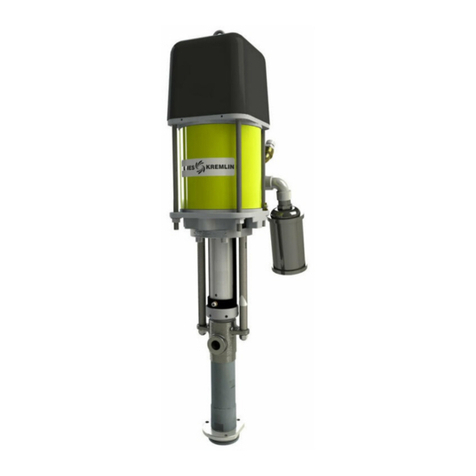
SAMES KREMLIN
SAMES KREMLIN REXSON 2B225 user manual

Sagola
Sagola Mack 150 instruction manual

Ribimex
Ribimex RIBILAND PRPVC401SP User and maintenance manual
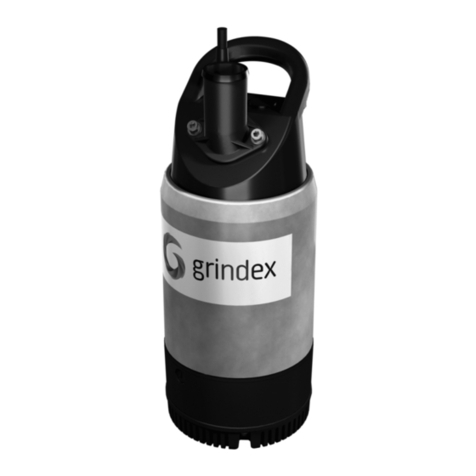
Grindex
Grindex 8122.210 Macro Installation, operation and maintenance manual
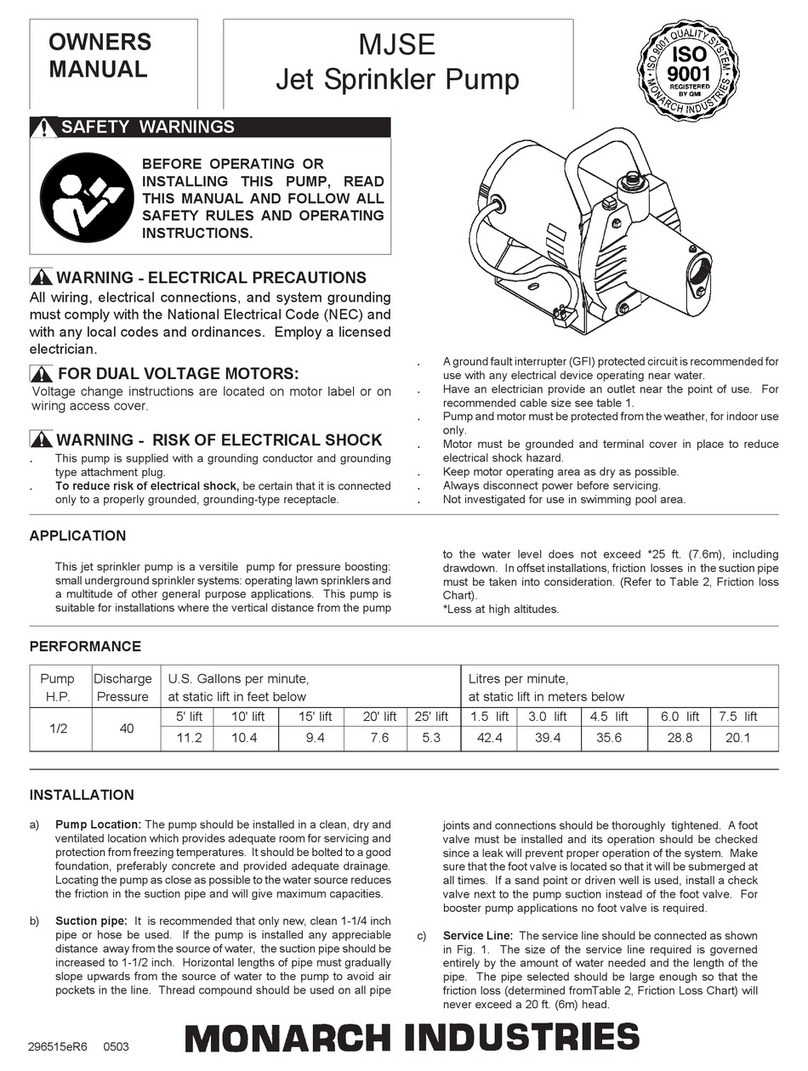
Monarch Industries
Monarch Industries MJSE owner's manual
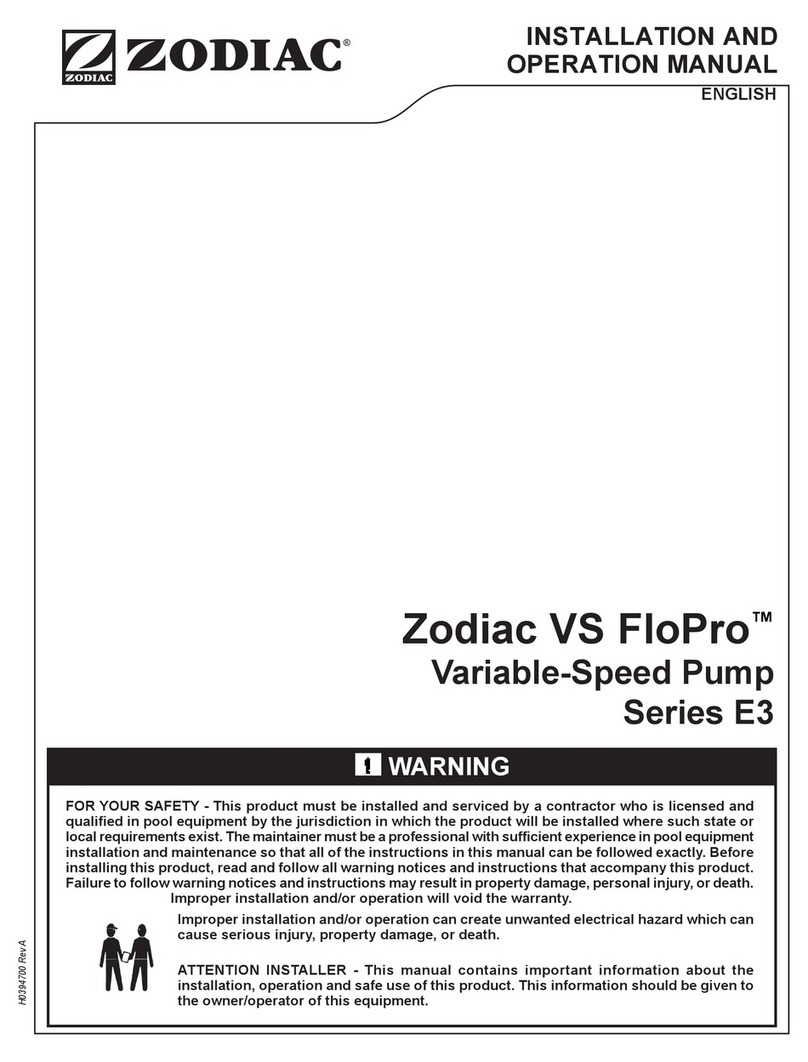
Zodiac
Zodiac VS FloPro E3 Series Installation and operation manual


